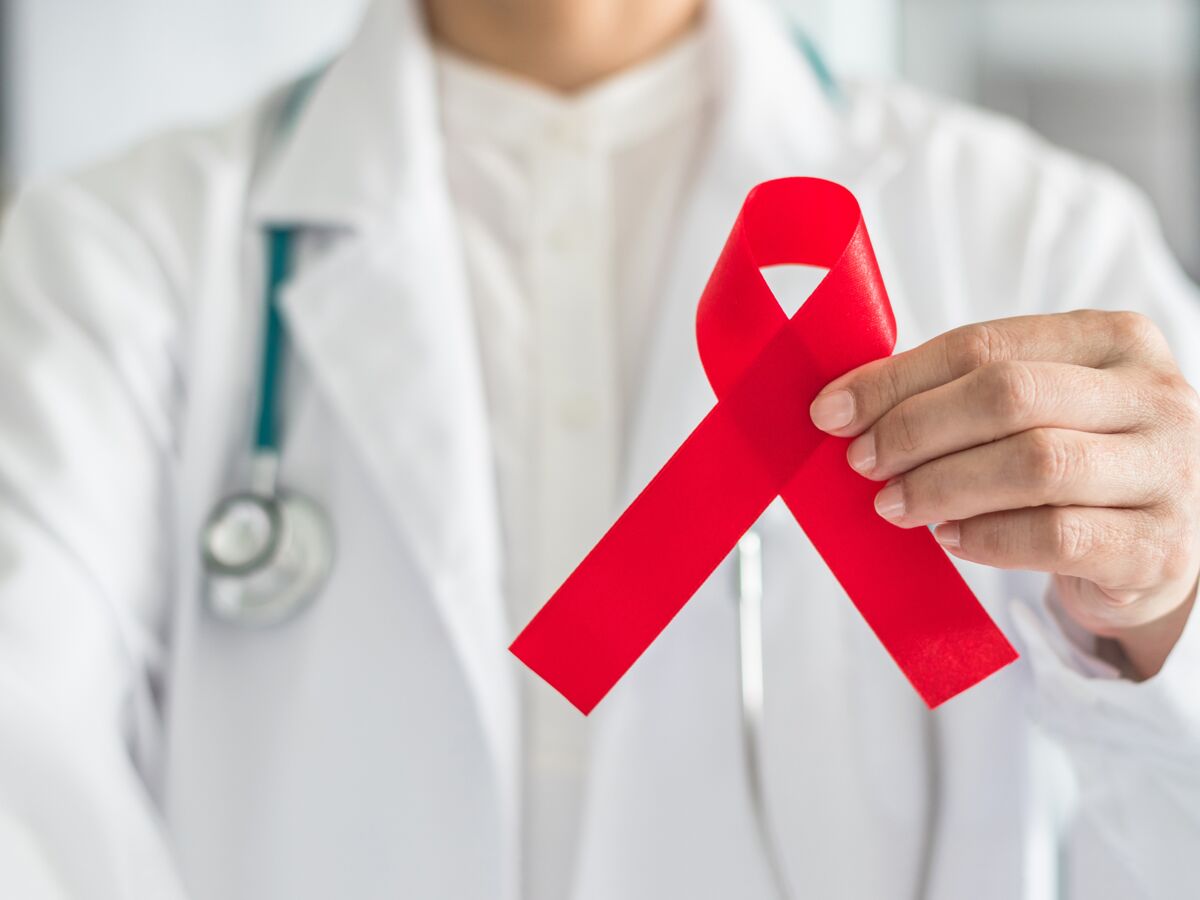According to estimates by the World Health Organization, nearly 38.4 million people were living with HIV in 2021. Today, strategies to fight AIDS involve various lines of action, in particular prevention, early diagnosis, and the democratization of access to care. Infected individuals are offered lifelong antiretroviral treatment, based on three or four antiretroviral drugs (tritherapy or quadruple therapy). These prevent the multiplication of the virus without destroying it, and can cause various complications (disorders of the cardiovascular system, fat and sugar metabolism, liver, kidney or bone toxicity, etc.).
1. An antiretroviral treatment comprising at least three antiretrovirals
Today, there is no treatment capable of curing an HIV infection. The main treatment is based on taking antiretroviral drugs, effective for:
- stop the multiplication of HIV;
- reduce viral load;
- limit the transmission of the virus to partners, to fetuses during pregnancy and to babies during breastfeeding;
- strengthen the immune system;
- improve the life expectancy of infected people.
To enable effective action and reduce the risk of resistance to molecules, doctors prescribe triple therapy or quadruple therapy, including at least three antiretroviral drugs (or ARVs). It is recommended to start treatment as soon as possible after the announcement of seropositivity. Antiretroviral treatment must be taken without any interruption, and for life. The consumption of antiretroviral drugs can cause a number of side effects from the first weeks: skin rashes and other allergic manifestations, fatigue, loss of appetite, headaches, digestive disorders, drug-induced hepatitis. In 2015, doctors had 20 different antiretroviral (ARV) drugs.
2. Specific vaccination recommendations
People infected with HIV have a weakened immune system, and are more likely to contract opportunistic infections. To prevent certain pathologies, specific vaccination recommendations are offered in case of HIV :
On the other hand, the tuberculosis vaccine is contraindicated, and live vaccines are only possible if the CD4 lymphocyte count is greater than 200/mm3.
3. Management of complications of antiretroviral treatment
To date, nearly 23.3 million people are affected by anti-HIV treatment in the world. Thanks to this care, their life expectancy is similar to that of an HIV-negative individual of the same age. That being said, the HAART offered to people infected with HIV is a powerful treatment that requires diligent and close medical monitoring. In the long term, the consumption of antiretroviral drugs can cause various complicationslike :
- fat distribution disorders or lipodystrophy: lipoatrophy (protruding veins, sunken cheeks) or lipohypertrophy (excess fat in the abdomen and trunk);
- an increase in cardiovascular risk (myocardial infarction for example);
- disorders of fat and sugar metabolism (diabetes for example);
- liver toxicity;
- impaired kidney function;
- of osteoporosis.
In parallel with HAART, people infected with HIV may be prescribed treatments to treat these complications. It could be :
- medicines for high blood pressure and/or diabetes;
- drugs responsible for reducing fats in the blood;
- restorative surgical interventions, such as lipostructure (autograft of adipose tissue) or hollow fillings.
Doctors may also choose to switch from one antiretroviral drug to another. Finally, certain preventive measures are recommended for people affected by HAART. It is recommended :
- to quit smoking;
- practice a regular sporting activity;
- adopt a healthy and balanced diet;
- to limit the consumption of alcohol;
- to seek advice from your doctor before taking any medication, as antiretrovirals can cause dangerous drug interactions.
Sources
French association for the fight against AIDS and hepatitis AIDES, Joint United Nations Program on HIV/AIDS UNAIDS, World Health Organization
Read also :
⋙ AIDS: 12 misconceptions that deserve to be clarified
⋙ HIV: what are the different screening methods and when to do the test?
⋙ AIDS: 7 things to know about HIV
